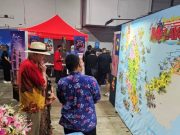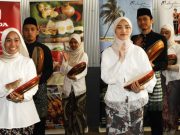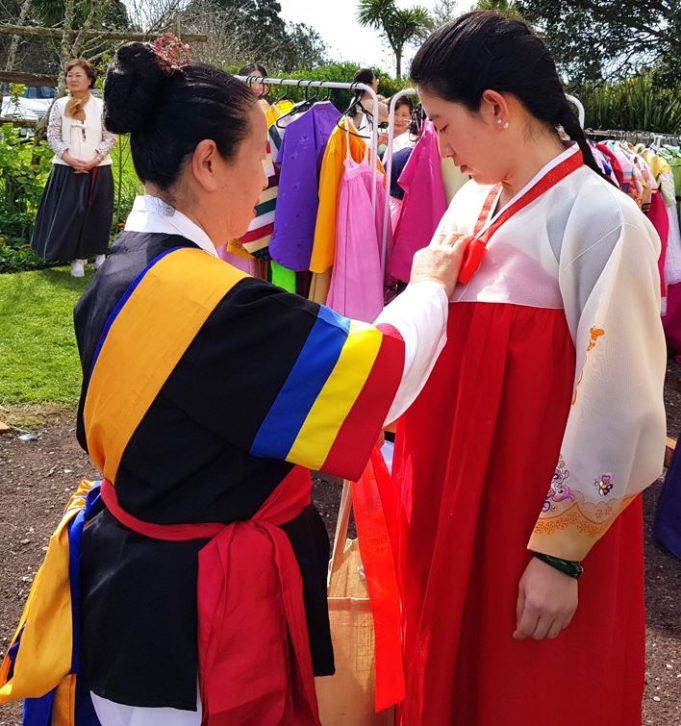By Ricky Matthew
AUCKLAND – In the vibrant tapestry of cultures that weave through New Zealand’s diverse society, one tradition stands out as an exquisite thread connecting Korean expatriates to their roots – the Hanbok.
This traditional Korean attire, known for its intricate designs and timeless elegance, not only captures the essence of Korean culture but also serves to keep it alive in a foreign land.
To put this into context, the Hanbok represents Korea in a similar way that the Sari is to South Asia, the Ao dai to Vietnam, the Kimono to Japan, the Cheongsam and Hanfu to China, the Barong Tagalog to the Philippines, the Kebaya and Sarong in Indonesia and Malaysia and the Thawb in the Middle East and South Asia.
The Hanbok is a cherished emblem of Korean heritage that carries a captivating history that spans more than a millennium. Its inception can be traced back to the era of the Three Kingdoms, a period filled with the diverse cultural influences of neighbouring regions. However, as Korea’s distinct identity solidified over time, so did the unique characteristics of the Hanbok.
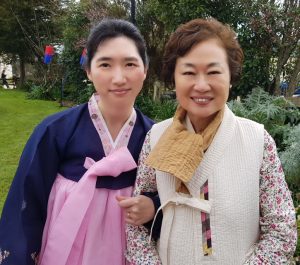
Halfway across the world Sabrina and Mija, two Korean expats, have been importing traditional Korean Hanboks from their homeland. Recently, they shared their insights with Migrant News on the significance of the Hanbok in their lives and its role in preserving their heritage.
When asked about the occasions for wearing the Hanbok, Sabrina explained: “Traditionally, it is worn during festive occasions like the New Year or visiting festivals in Korea.”
Mija, who has lived in New Zealand for a decade, recalls that her children occasionally wear the Hanbok, although it can be a bit uncomfortable due to its length. Sabrina, a resident since 1994, adds, “It’s not an everyday attire, but they do wear it on special occasions like birthdays.”
As Mija mentions, her children may not speak Korean fluently, but they are eager to learn and engage with their heritage through traditions such as wearing a Hanbok.
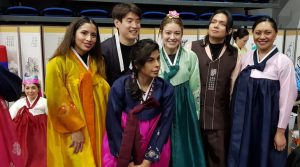
The Hanbok’s unique design and materials also play a significant role in its revival. Traditionally crafted from Asian silk, the attire has evolved over time, with various materials now available to suit different preferences and budgets. “Prices can range from $150 to thousands of dollars, depending on the quality and design,” says Sabrina. “This accessibility ensures that anyone, regardless of their background, can enjoy the beauty of the Hanbok.”
Furthermore, the design of the Hanbok isn’t arbitrary. “There are many designers for Hanbok, and it depends on the era,” Mija explains. “Different colours and designs are associated with various life stages and social statuses.”
For instance, the way one wears their hair can signify marital status, with hair up indicating marriage and braided hair symbolizing singlehood. Sabrina mentions “I am married; therefore, I wear my hair up.” Such intricate details make the Hanbok not just a garment but a reflection of one’s life journey and social standing.
In New Zealand, the resurgence of interest in Korean culture is apparent, and the Hanbok plays a pivotal role in this revival as it acts as a “symbol of our culture. Even something as simple as a Korean fried chicken franchise (NeNe Chicken) making headlines in the news indicates that people here are becoming more interested in Korean culture,” observes Sabrina.
The Hanbok, with its timeless charm, is becoming a symbol of Korea’s cultural richness and a bridge that connects generations, transcending borders.
The Hanbok’s journey from traditional attire to a symbol of cultural continuity in a foreign land showcases its enduring relevance in the modern world. In the heart of New Zealand, it is not merely a garment but a testament to the indomitable spirit of preserving one’s heritage, one stitch at a time.



